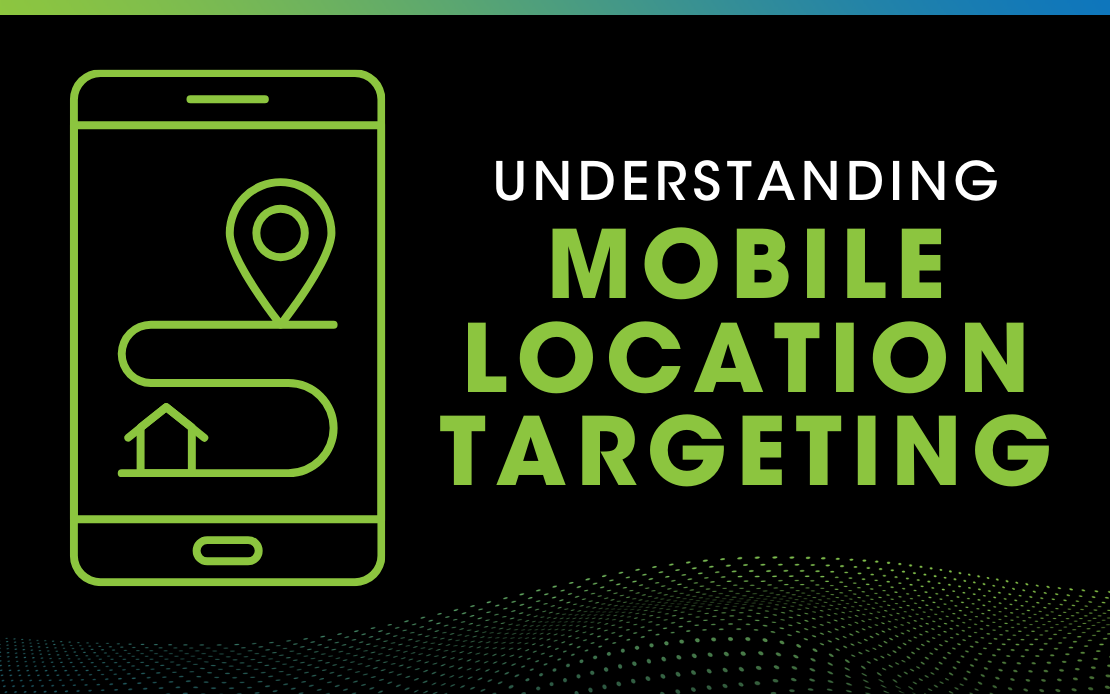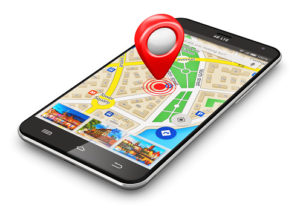
Mobile devices currently make up more than half of web traffic, and businesses that utilize a smart mobile strategy will have an advantage over their competition. There are several forms of mobile targeted advertising, and ensuring the correct one is being used is vital to the success of a marketing campaign.

Mobile Location Targeting (GPS based) gives advertisers the ability to reach users in specific locations using information gathered from their GPS, apps, connected Wi-Fi networks, and mobile carrier inferred IP addresses. This particular type of targeting on mobile devices offers some of the most precise targeting available, as it creates a perfect outline of the targeted location – whether it is a specific store location, parking lot, zip code, or radius from your store – as opposed to reaching all users within an entire city or DMA.
GPS technology allows the targeting to reach the desired demographic when they are at the locations of interest and/or where they have been in the past, which indicates a potentially strong purchase intent. You are able to drive future shopping or searching behavior through advertisements, and can even reach those who visit competitors or nearby, similar locations. The ads are delivered across mobile apps, and the tracking techniques offer more advanced metrics, so you know where your ads were seen, plus conversion tracking and view-through conversion tracking – not simply impressions and clicks.
There are different strategies and terminology to know when using Mobile Location Targeting.
- Real-Time Targeting – also known as “hyper-local targeting” gathers smartphone user location information about the user’s REAL TIME location – as in, where they are currently. If the user is within the desired target location, an advertiser’s ad can be served. Commonly, retail stores and companies selling consumer packaged goods will find real-time targeting the most useful to help increase awareness of a nearby store location.
- Lookback Targeting – also known as “historical targeting” uses smartphone users’ location history to determine if the user has been at or in a location within a specific amount of time. This type of technology has a look back window of up to one year, allowing advertisers to use this past location history to help determine their future purchase intent. Auto and RV dealerships or other businesses that sell higher-priced goods that may require more planning to purchase successfully use historical targeting to deliver ads to potential customers who may have been to a specific location twice or more within a 30-day period, for example. Looking back to tradeshows or events that contain a business’s target demographic have also seen success.
- Geofencing – the creation of a boundary so that when a person enters the area or radius of the boundary they become an active target of the brand’s marketing strategy.
- Geo Conquesting – a marketing strategy designed to divert competitor’s foot traffic by offering them a better deal when they are in or near a competitor’s location.
- IP Targeting – using an Internet Protocol (IP) Address (a unique numerical code that is associated with each unique device on an internet network) to target people using devices connected to the WiFi network at that physical location which can be either residential or commercial.
- Weather Targeting – targeting users in an area based on prevailing or upcoming weather conditions to serve relevant marketing messages.
Advantages of Mobile Location Targeting
The majority of smartphone users take their device with them wherever they go. This provides businesses with a way to bridge the gap between online and offline behaviors to attain valuable insights into the best ways to tailor their messages to be more effective.
Another reason location-based marketing is beneficial is an improved customer experience as it is personal and timely. Consumers are bombarded with an immense amount of advertisements daily, causing them to be more particular about which branded offers they interact with. Connecting with them in the moment they are close to making a purchasing decision in-store, with the right message, can make all the difference.
While reaching a consumer in the decision stage can be very effective, location-based marketing can be successfully used in all stages of the buyer’s journey. Think back to walking through the mall – you may just be browsing with nothing particular in mind. This gives an advertiser a chance to catch you in the awareness phase, presenting an ad to keep their brand top of mind. Let’s say you already downloaded the app of a brand located in the mall. Location-based data now allows the brand to present an in-app offer exclusive to you to ensure you are delighted in the retention phase.
Businesses can be confident in the use of this data because in order for the consumer’s location data to be sent to brands they must have already turned on their GPS signal and opted into the data being used in this way.
The results of all these advantages to location-based marketing are clear. According to a survey done by Lawless Research on behalf of Factual, 9 in 10 marketers surveyed said location-based marketing resulted in higher sales, 86% said it grew their customer base, and 84% said it resulted in higher customer engagement.River Valley Media Group can provide related mobile location targeting and supporting marketing services into an effective overall marketing plan. Every day we develop effective programs for our clients and can do likewise for you. Complete the form below or give us a call to learn more.
